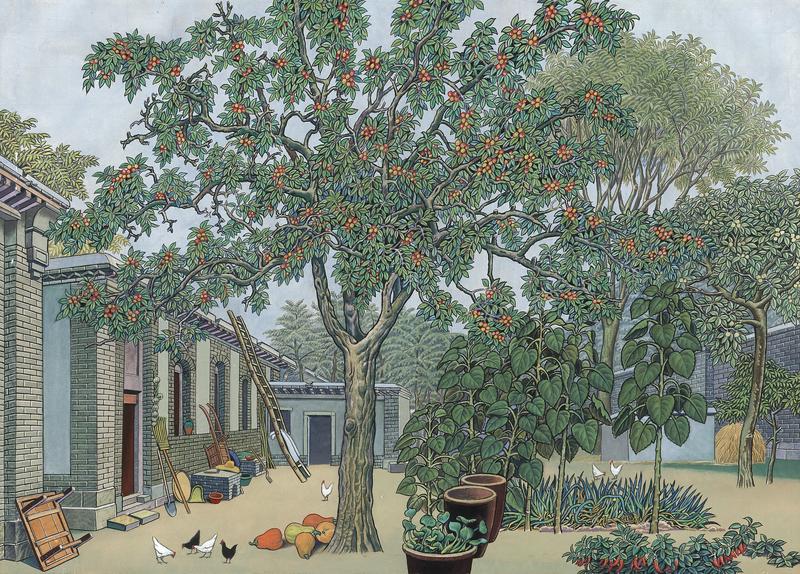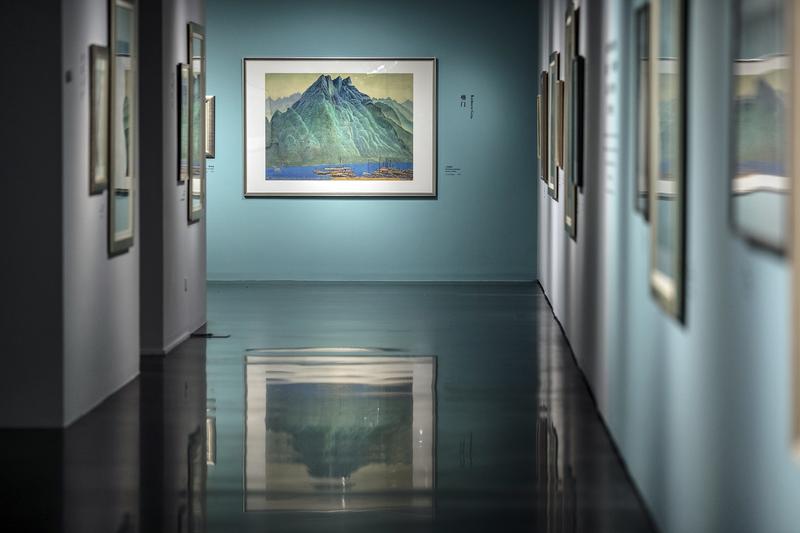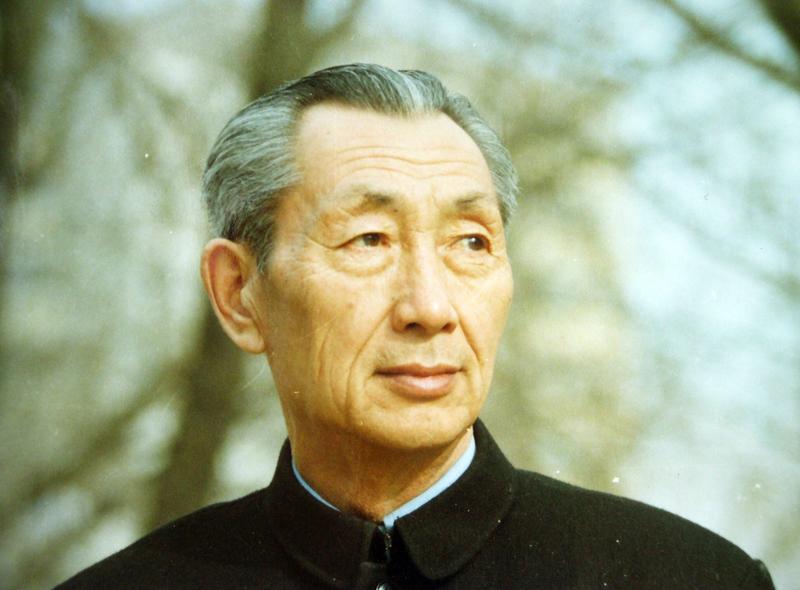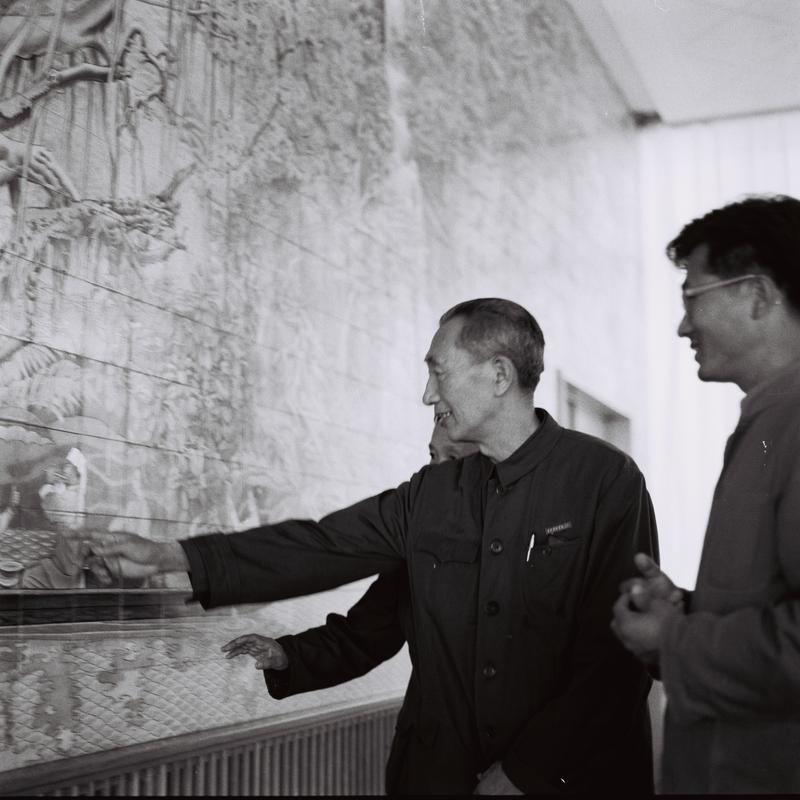Tsinghua exhibition pays tribute to an unassuming but brilliant artist, Lin Qi reports.
 A Date Tree in Licun Village, an ink-color painting by Zhu Danian. The Tsinghua University Art Museum in Beijing is hosting an exhibition to mark the 105th anniversary of Zhu's birth. (PHOTO PROVIDED TO CHINA DAILY)
A Date Tree in Licun Village, an ink-color painting by Zhu Danian. The Tsinghua University Art Museum in Beijing is hosting an exhibition to mark the 105th anniversary of Zhu's birth. (PHOTO PROVIDED TO CHINA DAILY)
Du Dakai vividly recalls a journey to Guangdong province in the winter of 1978. The professor of Tsinghua University's Academy of Arts and Design accompanied Zhu Danian (1916-95), an eminent painter and ceramic artist, to Xiqiao, a village to the south of Guangzhou known for its stunning natural scenery and rich cultural heritage, to travel and do some outdoor sketching.
"The mental picture of Zhu putting a thick overcoat around his shoulders, sitting on a small stool and indulging himself in drawing for almost a day has reemerged in my mind from time to time over the years. It's a lifelong memory," Du says.
Zhu, one of the founding members of the Central Academy of Arts and Design, now Tsinghua University's Academy of Arts and Design, pioneered the development of modern Chinese ceramic art and mural creation. He left an oeuvre consisting of pen drawings and Chinese ink-color paintings, presenting fine brushwork, realistic details and a vibrant palette.
Zhu was also the mastermind of the renowned Jianguo Ci porcelain sets produced in 1952. The crockery sets were exclusively designed for state banquets at the time and to be given as gifts to distinguished foreign guests.
Zhu is, however, seen as a master of art who has been generally long forgotten, for he led a low-profile life and was fully committed to creation and education.
To mark the 105th anniversary of Zhu's birth, Tsinghua University Art Museum has opened an exhibition dedicated to his accomplishments in modern Chinese art and as a tribute to his intellectual demeanor. It runs until March 20 with dozens of his pen drawings and ink-color paintings, some of which came from a recent donation to the museum by the Zhu family.
 Kuimen Gate, an ink-color painting by Zhu Danian, on display at the Beijing exhibition. (PHOTO PROVIDED TO CHINA DAILY)
Kuimen Gate, an ink-color painting by Zhu Danian, on display at the Beijing exhibition. (PHOTO PROVIDED TO CHINA DAILY)
The exhibition pairs pen drawings, which Zhu sketched outdoors and mostly in monochromatic ink, with Chinese ink-color paintings which he completed based on the drawings.
The pen drawings show Zhu's attention to details, vividly presenting them with precision, refinement and a neat manner. The pieces are done in the classical Chinese painting style of gongbi zhongcai (meticulous brushwork and heavy colors), which requires accurate depiction of the subjects and strong color tones. Zhu is acknowledged as a master of this style.
Du, who studied under Zhu's guidance at Tsinghua, says: "The quality of tools and materials used does not determine the value of an artwork. Simple items can also produce works of high quality. Zhu's pen drawings are a good example of this."
Zhu Heng, a grandchild of Zhu Danian, says his approach to art was to create a mellow and serene atmosphere like that of a mountain stream.
"When looking from some distance, viewers will be caught by the amount of detail in those drawings, all of which are arranged in an orderly and meticulous way," Zhu Heng says.
"If they come closer, they will find that grandpa drew with his fingers in a quite relaxed manner, a result of solid training in his early years and an accumulation of experience throughout the decades."
Born with the proverbial silver spoon, Zhu Danian was expected by his commercially successful father to one day inherit the family business. But he attended the Hangzhou Fine Arts School, now China Academy of Art in Hangzhou, Zhejiang province, and later the Central Academy of Fine Arts in Beijing, studying classical Chinese paintings, oil paintings and sculpture. In the 1930s he went to Tokyo fine arts school, now Tokyo University of the Arts, where he studied under several Japanese masters of ceramic art.
 Zhu Danian, an eminent artist known for his realistic style and strong color tones. (PHOTO PROVIDED TO CHINA DAILY)
Zhu Danian, an eminent artist known for his realistic style and strong color tones. (PHOTO PROVIDED TO CHINA DAILY)
Such rich experience allowed him to bridge the past and present, and East and West in his work, whether he worked with paper or on ceramics and murals.
He traveled extensively throughout the country. The paintings on show reflect his love of nature, especially a passion for depicting the dense tropical forests, plants and birds in Xishuangbanna, Yunnan province, which he visited more than once.
Liu Jude, a professor at Tsinghua University's Academy of Arts and Design and a former student of Zhu Danian, went with him on several sketching trips. He says that, while students felt daunted by the overwhelming details of a landscape they were to draw, Zhu Danian "felt intrigued by the layers upon layers of trees, woods and forests and the complex, changing scenes in which he found the true beauty of nature".
"I remembered he once climbed up to the rooftop of a farmer's house, so that he could have a clear view of two date trees. He sat there for a whole day, so focused on the scene before him. His mind clear and his fingers steady, he drew the twisting and interweaving tree knots and branches with sweeping meticulousness," Liu says.
"The next day he continued to draw on the rooftop, and added a paddy field and shepherds. Two decades later I saw the drawing at an exhibition, and still, I felt invigorated and moved."
Zhu Heng, the grandson, says people often say how much they admire Zhu Danian's hardworking spirit, but he didn't feel tired even after working outdoors for hours.
"When he was devoted to what he was doing, he enjoyed the process, not realizing how long he had been sitting there and painting, and not caring about how many papers he had used and thrown away."
 A photo taken in 1979 shows Zhu Danian checking his ceramic work at the Beijing airport. (PHOTO PROVIDED TO CHINA DAILY)
A photo taken in 1979 shows Zhu Danian checking his ceramic work at the Beijing airport. (PHOTO PROVIDED TO CHINA DAILY)
Zhu Danian's depictions of Xishuangbanna give a full expression to his enthusiasm for the place's distinctive tropical views and diverse ethnic cultures. The works enthrall people with lively details in which the artist endowed a profound take on all life on Earth.
When he was commissioned to create a mural to decorate a restaurant at Beijing Capital International Airport in the late 1970s, he designed a ceramic piece that showed a panoramic view of Xishuangbanna's tropical forests, waterfalls, rivers and a boat carrying five people of the Dai ethnic group in Yunnan. He was also inspired by a 380-year-old great banyan in Jiangmen, Guangdong, known as "birds' paradise".
The monumental mural, titled Song of the Forest, measures 20 meters in length and 3.4 meters in height, and comprises more than 3,000 ceramic tiles, made with the aid of artisans in Jingdezhen, Jiangxi province, hailed as China's "porcelain capital".
Zhu Danian later said of the work, "when people enter the restaurant and are welcomed by a view of tropical forests and all life thriving, they will feel engulfed by the warmth of sun and the pleasant smell of spring".
Among works donated by the Zhu family to Tsinghua University Art Museum, there are drafts, manuscripts and other materials pertaining to the creation of Song of the Forest.
The museum has named one of its exhibition halls after Zhu Danian and will dedicate it to showing his works in the future.
Zhu Danian once said: "I have loved art since childhood. I can't explain why. I was fascinated with it, not out of a strong sense of mission. I entered the palace of art with a pure, devout heart, and it has paid me back with mental comfort and spiritual fulfillment.
"The world is practical. It is hard to be an ideal person. Every one has worries and pains. Only art can make us feel detached from worldly affairs and enchanted by the great happiness it brings."
Contact the writer at linqi@chinadaily.com.cn


